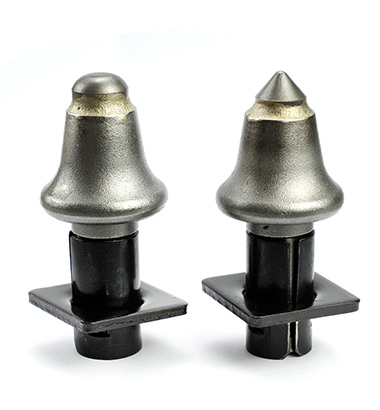 |
 |
 |
 |
 |
 |
 |
 |
 |
|
The same is oil extraction, there is no essential difference between land mining and seabed mining(KoneCarbide Tools For Mining): both are to develop, process and utilize oil and gas resources with strategic and economic value. Therefore, similar to land exploitation, the exploitation of seabed oil must first be surveyed and explored. For hundreds of millions of years, various biological remains in the ocean have formed a large amount of organic carbon. At the same time, rivers on land brought sediment and organic matter into the ocean, and buried a large number of biological remains layer by layer year after year. After a long geological evolution , The sediments turned into rocks, forming a large number of sedimentary basins. Under the action of factors such as rock pressure, high temperature and bacteria, these biological remains and organic matter gradually formed oil. At present, for seabed oil, most of the censuses of various countries start with geological surveys and studies, mainly through seismic, gravity and magnetic survey methods to find oil and gas structures. On the basis of the general survey, use "geophysical exploration" to analyze and understand the distribution of subsurface rock formations, geological structure types, and oil and gas traps, so as to determine the location of exploration wells. Then, use the "drilling exploration method" to obtain geological data, conduct analysis and evaluation, and determine whether the geological structure contains oil, oil content and mining value. Some people in the industry jokingly said that this is to do "CT" for the seabed, and obtain the "CT map" of the geological structure of the seabed, and then you can find the oil and gas fields on the seabed according to the map. Offshore oil operationsAfter completing the census and exploration, go through some procedures stipulated by the state, find a drilling company and equipment, and then start mining. How to pick it? Special mining tools came into being. According to industry insiders, the engineering measures for drilling production wells and exploiting oil and gas mainly include: 1. Artificial islands are mostly used in water near the coastline, which is more economical. 2. Fixed oil and gas production platforms, in the form of pile platforms (jacket platforms), cable tower platforms, and strategic platforms (steel-pan concrete gravity platforms). 3. Floating oil and gas production platforms can be divided into "removable floating platforms" (also known as movable platforms) according to their forms, such as seated platforms (also known as sinking and floating platforms), self-elevating platforms, and semi-submersible platforms. floating platforms and ship-type platforms (i.e. drillships) - and "non-migrating floating platforms" such as tensioned platforms, articulated platforms. 4. The subsea oil production device adopts the method of drilling underwater wellheads, and installs the wellheads on the seabed, and the oil and gas produced are directly sent to land or imported into seabed oil and gas collection facilities by pipelines. Previous offshore drilling for oilIn fact, the history of extracting oil from underwater detection dates back to the 1890s, when American oil workers began exploring near the Santa Barbara Bay in California, and even built docks to find better drilling. point. In order to drill for oil, Venezuelan oil workers have also built a dock-like platform on the shallow lake. As early as 1911, oil exploration was carried out in Caddo Lake in Louisiana. In 1937, Super Oil Company and Pure Oil Company jointly found crude oil near Cameron Beach in Louisiana. But there was little industry experience at that time, so it was just luck. Later, land drilling was improved, and Magnolia Oil Company combined the two exploration methods of mobile workboat and fixed platform, and Cole McGee's clever engineer Searle adopted and perfected this new method. Docks and transport ships began to be used together, and have since been perfected several times. In November 1947, the first barrel of subsea oil was dug up. Other companies have followed suit, and the technology of offshore oil drilling platforms has also been continuously reformed. From the initial "drilling a new well, a new platform must be built" gradually developed into a mobile drilling platform, and later developed into a "jack-up platform" to today's Integrated offshore drilling platform. Today's Offshore Oil PlatformsChina's continental shelf is one of the widest in the world, with a total area of 4.73 million square kilometers. According to estimates by relevant experts, the geological reserves of oil on the continental shelf alone are about 25 billion tons and 8 trillion cubic meters of natural gas. China first used platforms to drill wells at sea in 1963, when China's first buoy-type drilling platform was built by local methods, and three wells were drilled in Yinggehai 4 kilometers from the coast. In 1966, the first official offshore platform was established in the Bohai Sea. On December 31 of the same year, the first exploration well in the Bohai Sea was drilled and industrial oil flow was obtained on June 14, 1967, which opened the prelude to offshore oil exploration and development. At present, the cost and risk of subsea oil extraction are still high, but with the reduction of land oil resources, the status of subsea oil in national energy strategy security will become higher and higher. We expect that China's subsea oil exploration will follow the general direction of "green", "high efficiency" and "safety", embark on a more brilliant development path, and make greater contributions to the motherland and the world economy. |
Home
| About Us | Your
Project | Gallery of Our Work
Around The Shop |
Testimonials | Links | Location
| Contact Us
Updike
Welding
Shop Location: 1100 S. 14th Street, Leesburg, FL 34748
Mailing Address: 35507 Dogwood Drive, Leesburg, FL 34748
| |
